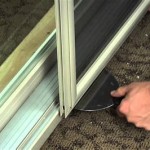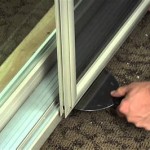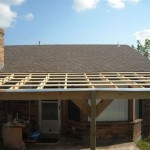Filling Gaps Between Patio Slabs
A patio is an excellent addition to any home, providing a space for relaxation, entertaining, and enjoying the outdoors. However, over time, the gaps between patio slabs can become unsightly and pose safety hazards. These gaps can accumulate dirt, debris, and weeds, making the area unappealing and potentially creating tripping hazards. Filling these gaps is essential for maintaining the aesthetic appeal and safety of your patio. This article will explore the various methods for filling gaps between patio slabs, ensuring a smooth and durable surface for your outdoor space.
Understanding the Importance of Filling Gaps
Filling gaps between patio slabs offers several benefits, both aesthetic and practical:
- Enhanced Appearance: A patio with filled gaps looks more polished and cohesive, enhancing the overall curb appeal of your home.
- Improved Safety: Filled gaps eliminate tripping hazards, preventing accidents and ensuring a smooth walking surface.
- Weed Control: Filling the gaps prevents weeds from taking root in the spaces between the slabs, reducing maintenance and keeping your patio looking neat.
- Moisture Prevention: Filling gaps helps prevent water from seeping into the foundation, reducing the risk of damage and potential mold growth.
Methods for Filling Gaps Between Patio Slabs
Several methods can be employed to fill gaps between patio slabs, each with its advantages and disadvantages. The best choice will depend on the size of the gaps, the desired aesthetic, and your budget:
1. Sand
Using sand is a common and cost-effective method for filling small gaps. It is easily available and simple to apply. To use sand, sweep the gaps clean and then apply a layer of sand, using a broom or shovel to distribute it evenly. Compacting the sand with a tamper or a heavy object will create a solid surface.
Advantages of sand:
- Inexpensive and readily available
- Easy to apply
- Provides a natural look
Disadvantages of sand:
- Not suitable for large gaps
- Can be easily washed away by rain
- May require frequent reapplication
2. Polymeric Sand
Polymeric sand is a specialized sand mixture containing polymers that bind together upon contact with moisture. This creates a hard, durable surface that is resistant to washing away. It is perfect for filling larger gaps and is ideal for patios exposed to heavy foot traffic.
Advantages of polymeric sand:
- Strong and durable
- Resistant to washing away
- Long-lasting
Disadvantages of polymeric sand:
- More expensive than regular sand
- Can be challenging to apply evenly
3. Concrete
For larger gaps or uneven surfaces, concrete is a durable and long-lasting solution. Concrete offers a strong, stable surface that can withstand heavy traffic. It's important to use a concrete mix specifically designed for patios, and to ensure proper curing time for optimal strength.
Advantages of concrete:
- Extremely strong and durable
- Suitable for large gaps and uneven surfaces
Disadvantages of concrete:
- More complex and time-consuming to apply
- Requires professional installation for larger projects
- Can be expensive
4. Gravel
Gravel is an attractive and low-maintenance option for filling large gaps between patio slabs. It adds a rustic charm to your patio and provides excellent drainage. Gravel is easy to apply, simply spreading it evenly into the gaps between the slabs.
Advantages of gravel:
- Attractive and natural look
- Excellent drainage
- Easy to apply
Disadvantages of gravel:
- Not as stable as sand or concrete
- May require occasional replenishing
Choosing the Right Method
The best method for filling gaps between patio slabs depends on several factors, including:
- Gap size: Small gaps are easily filled with sand, while larger gaps may require polymeric sand or concrete.
- Aesthetic preference: Sand and gravel offer a more natural look, while polymeric sand and concrete provide a more polished finish.
- Budget: Sand is the most cost-effective option, followed by gravel, polymeric sand, and concrete.
- Foot traffic: Higher traffic areas may require a more durable solution like polymeric sand or concrete.
Conclusion
Filling gaps between patio slabs is an essential maintenance task that improves both the appearance and safety of your outdoor space. By understanding the different methods available and considering your specific requirements, you can choose the best option to create a durable and attractive patio for years to come.

How To Fill Gaps In Your Patio Or Paving Slabs Renovated Co

How To Fill Gaps In Your Patio Or Paving Slabs Renovated Co

Filling Gaps Between Pavers How To Fill Large S In Flags

The Best Ways To Fill Joints Between Paving Slabs
Patio Concrete Slabs Fill Gaps Ceramic Tile Advice Forums John Bridge

How To Repoint Paving Slabs

Our Top 4 Solutions For Filling Paving Stone Gaps Grand River Natural

The Best Ways To Fill Joints Between Paving Slabs

What To Use Fill A Gap Between Patio And Lawn Care Forum

How To Fill An Unsightly Gap In A Patio Slab Orange County Register








